cross-border payments
description: transactions involving the transfer of money between parties in two different countries
27 results

The Future of Money: How the Digital Revolution Is Transforming Currencies and Finance
by
Eswar S. Prasad
Published 27 Sep 2021
In November 2019, the MAS announced the successful development of a blockchain-based prototype to enable payments in various currencies on the same network. These projects seem to be making progress in using DLT to improve domestic and cross-border payments (payment-versus-payment) and securities transactions (DvP). One open question, as the MAS puts it, is “whether advanced liquidity management techniques might introduce new risks.” Cross-border Payments Cross-border payments, which are necessitated by trade and financial transactions across national borders, constitute a big business. For instance, the total value of international trade in goods and commercial services alone was $25 trillion in 2019.
…
Correspondent banks either run operations in multiple countries or form direct relationships with banks in other countries to facilitate these operations. Despite rising demand for cross-border payment services, the number of active correspondent banks globally is in decline. From 2011 to 2018, their number declined by 20 percent even as the value of cross-border payments increased by 15 percent. This is a bad omen for the cost, speed, and transparency of international money transfers, which already face a multitude of hurdles. The Complications Cross-border payments are inherently complicated. They involve multiple currencies, must often be routed through several institutions, and need to be consistent with country-specific financial regulations.
…
It is an intriguing proposition that innovations in finance can create pathways to maneuver around these constraints and thereby reduce the government’s direct involvement in financial markets. These possibilities and the effects that such developments might have on financial stability will be explored later in this book. Cross-border Payments Cross-border payments are necessitated by trade and financial transactions across countries. When a wine importer in New York purchases a shipment of Cabernet Sauvignon from a winemaker in Chile, that importer instructs his bank to transfer the agreed-upon funds to the winemaker’s Chilean bank account.
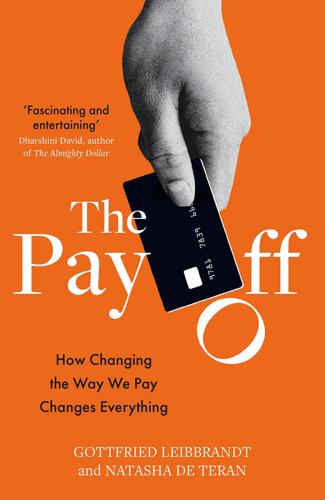
The Pay Off: How Changing the Way We Pay Changes Everything
by
Gottfried Leibbrandt
and
Natasha de Teran
Published 14 Jul 2021
Agreeing an agenda for the 2020 summit was never going to be easy, but one thing all participants agreed on was the need to improve cross-border payments. According to the G20: ‘Faster, cheaper, more transparent and more inclusive cross-border payment services, including remittances, would have widespread benefits for citizens and economies worldwide, supporting economic growth, international trade, global development and financial inclusion.’ In such a fractured geopolitical landscape and testing economic environment, it remains to be seen how quickly both governments and the private sector will act on their commitment to the cause. But the trajectory is undoubtedly towards making cross-border payments cheaper, faster and more transparent for everyone, especially the smaller users.
…
Bank rankings from: https://www.spglobal.com/marketintelligence/en/news-insights/trending/robdlgca1gbjyjrx3sdcjg2 For the story on why KfW became known as Germany’s dumbest bank, see: www.nytimes.com/2008/09/18/business/worldbusiness/18iht-kfw.4.16285369.html For the Alphaville comments on the CHAPS outage, see: https://ftalphaville.ft.com/2016/01/29/2151327/rtgs-and-the-story-of-batches-instead-of-blocks/ The value ofJPMorgan wholesale payments is taken from: www.jpmorganchase.com/corporate/investor-relations/document/line-of-business-ceo-letters-to-shareholders-2018.pdf Chapter 17 For the reputation of cross-border payments, see: M.L. Bech and J. Hancock (2020). ‘Innovations in payments’, BIS Quarterly Review, March, 21–36. The authors describe cross-border payments as ‘slower, more expensive and more opaque’. The IMF, according to a speech given by its deputy director, Dong He, sees them as ‘costly and cumbersome . . . opaque and slow’ (www.imf.org/en/News/Articles/2017/11/01/sp103017-fintech-and-cross-border-payments). For Hawala volume estimates, see: http://www.treas.gov/offices/enforcement/key-issues/hawala/; www.un.org/esa/desa/papers/2002/esa02dp26.pdf (calculation based on TransferWise’s published statistic of £5 billion per month in transfers).
…
Having led the expansion of the American steel industry in the late nineteenth century, he became one of the richest Americans in history. 17. If money never moves, how do you send it abroad? Cross-border payments are the payments that everyone loves to hate. They are routinely described as expensive, slow and opaque. And as anybody who has tried to send a couple of hundred dollars halfway across the world can confirm, this reputation is not undeserved. Cross-border payments can involve obscure bank codes, unrecognisable account formats and requests for details that appear completely irrelevant to the task at hand. If you’ve ever sent one you might recall needing to indicate who bears the charges, which can be substantial.

Digital Bank: Strategies for Launching or Becoming a Digital Bank
by
Chris Skinner
Published 27 Aug 2013
Michael (Mike) Laven, CEO of Currency Cloud is one of the latter visionaries, and is changing the game in cross-border payments by building a cloud-based offer for currency movements and offering this as a low-cost, transparent service to consumers and small businesses. What is the Currency Cloud? There is a huge volume of cross-border transactions that are well served for the large, multinational firms, but a major, untapped and underserved market for the cross-border payments needs of smaller firms. The Currency Cloud is a start up company in the world of cross-border payments that addresses these companies’ needs. We believe that the need to make cross-border payments has become globally ubiquitous.
…
Finally, for our back office operations, we focus upon resilience and security and we need it to be approved by our auditors. I am not sure they would be happy if I came up with a cloud offer today. But you have a lot of partner relationships where you let your partners’ process on your behalf, such as the Currency Cloud for cross-border payments. Is that not the same as using cloud? But in the context of those relationships, we are the cloud. It’s not something where we are putting our bank services in a cloud computing operation like Amazon. So it depends how you define cloud. Yes. There are very many ways of talking about cloud, and I am referring here to placing my operating systems and bank data in the cloud.
…
What they will have to do is stop using that system, come out of that system, go to another screen or pick up the telephone to connect to their bank and then perform the transaction. As they do the transaction with their bank, the bank will often process that transaction through their own proprietary network. What we do is ensure that they do not have to be faced with these breaks in processing by integrating all cross-border payments through our API into their business flow. We also bring a whole world of connectivity for the individual customer to a range of different sources of liquidity providers and payment platforms that are optimised for those customers. The cloud nature of our service brings this very large network of currency transactions and payment services that we connect back to the customer.
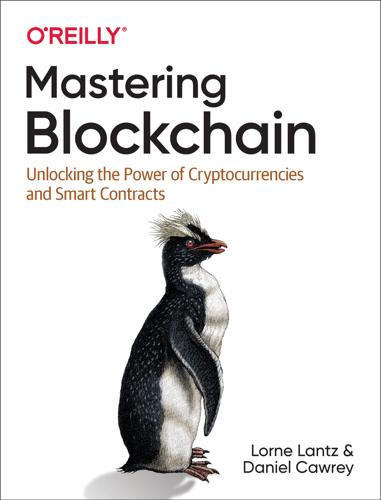
Mastering Blockchain: Unlocking the Power of Cryptocurrencies and Smart Contracts
by
Lorne Lantz
and
Daniel Cawrey
Published 8 Dec 2020
Ripple has hundreds of partnerships with various companies in the banking and payments sectors. The best-known strategic partnership is with the money remittances company MoneyGram, in which Ripple has made a $50 million equity investment. MoneyGram uses Ripple’s On-Demand Liquidity product to facilitate cheaper and faster cross-border payments. Stellar Launched in 2014, Stellar was founded by Jed McCaleb and Joyce Kim, who had both previously worked at Ripple. The Stellar protocol is supported by the 501(c)(3) nonprofit Stellar Development Foundation, created with the aim of providing a low-cost payment network for underbanked or unbanked individuals across the world.
…
One of the reasons for switching from the Ripple-designed consensus mechanism was that the Stellar blockchain unexpectedly forked in 2014, creating two separate networks and causing problems with transactions. After the departure of Joyce Kim, the Foundation began a long pivot, founding a company called Lightyear.io in 2017 (which became Interstellar in 2018 after acquiring the blockchain company Chain) to promote and encourage adoption of the protocol. Like Ripple, Stellar is focusing on cross-border payments, albeit with a more unbanked and underbanked bent, attempting to provide services to those who lack financial access. Scaling Blockchains In technology terms, scaling is the ability of a network to dynamically change resource allocation while improving or maintaining efficiency. Scaling has been a challenge as Bitcoin has grown: as more transactions end up on the blockchain, the network needs to continue providing a cheap and easy way to transact.
…
Figure 9-4. Design for the Boston Fed test—in Hyperledger, “chaincode” is a smart contract JPMorgan Investment bank JPMorgan has developed Quorum as its own blockchain based on Ethereum. It has also created its own stablecoin, JPC Coin. The cryptocurrency will be used as a method of making cross-border payments, which can be expensive and inefficient, via the Quorum blockchain. Users will be able to deposit fiat with the bank, be issued JPM Coin, and redeem it for fiat payment elsewhere. Permissioned Ledger Uses The use cases for permissioned systems are often very different from those of open blockchains.

The Blockchain Alternative: Rethinking Macroeconomic Policy and Economic Theory
by
Kariappa Bheemaiah
Published 26 Feb 2017
At about the same time that SWIFT was putting a call out for papers, Earthport partnered with Ripple, a company that helps construct quasi-private Blockchains for clients, to implement an instant cross-border payment system. Using Ripple’s blockchain-based RTGS**, Earthport launched the Distributed Ledger Hub (DLH), which provides its clients instant payments and liquidity, transaction cost efficiencies, a high standard of compliance control, and elimination of counter-party risk via pre-funding (Earthport, 2015). As stated by Jonathan Lear, Earthport’s President, “The world is getting smaller and payments needs to move faster… The legacy way of making cross-border payments, well there is only one way to describe it—it’s a real bloody mess….
…
Nature , Scientific Reports 6, Article number: 26889, doi: 10.1038/srep26889 . PwC. (2016). Blurred Lines: How FinTech is shaping Financial Services . Pricewaterhouse Cooper. PYMNTS. (2015, August 18). How Earthport And Ripple Are Teaming Up To Make Cross-Border Payments Instant . Retrieved from PYMNTS: http://www.pymnts.com/in-depth/2015/how-earthport-and-ripple-are-teaming-up-to-make-cross-border-payments-instant/ Raval, S. (2016). Decentralized Applications - Harnessing Bitcoin’s Blockchain Technology . California: O’Reilly Media, Inc. . Rizzo, P. ( 2015, October 8). Ripple Releases Interledger to Connect Banks and Blockchains .
…
In light of these services, banks have functioned as intermediaries that offset risk by acting as catalysts of cross-border trading. This has given rise to trade finance, which is a major source of revenue to banks. Trade finance is safe bet, as it provides a source of revenue that is independent of interest rates, provides cross-border payment fees, and has a low rate of default (up to 10 times lower than for traditional corporate lending (Accenture, 2016)). Together, supply chain management and trade finance provide market players with capital to produce and sell products and services within territories and across borders. However, in recent times, supply chain management and trade finance have come under increased scrutiny, which has resulted in processing delays and additional risks.
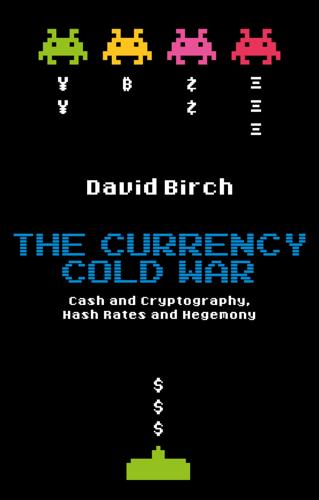
The Currency Cold War: Cash and Cryptography, Hash Rates and Hegemony
by
David G. W. Birch
Published 14 Apr 2020
Ever since the financial crisis of 2008, top economic thinkers have been warning that imbalances in the global economy are putting stress on the International Monetary and Financial System. By some measures, the US dollar’s central role in that system – in place since the Bretton Woods Agreement of 1944 – has never been stronger. As reflected in its overwhelming dominance when it comes to total central bank reserves, cross-border payments, foreign exchange trades and, most significantly, international corporate assets and liabilities, the greenback is more powerful than ever. But the world’s concentrated dependence on the US dollar is actually the system’s core weakness. It means that in moments of crisis, the US Federal Reserve (Fed) feels compelled to act not only as a lender of last resort to US banks, but also – in contradiction to its domestic economic mandate – as the ultimate financial backstop to the entire world.
…
I assume that Carney was thinking of these kinds of ‘official’ ACUs when he said (Jeffery and Hinge 2019): We think Libra and other potential new payment solutions are shining a light on deficiencies in the system. And that is to be welcomed. They are trying to solve them. So domestic payments are still too slow and not distributed in real time. And cross-border payments are much worse. They cost a lot more and take a lot longer to execute. And that is just not necessary. It is a product of the old architecture. So coming up with new architecture and trying to solve it is a good thing. He went on to say that his central bank serves ‘the people of the United Kingdom through the financial system’ and that ‘we do not serve the banks and insurance companies per se, they are financial intermediaries that also serve the financial system’.
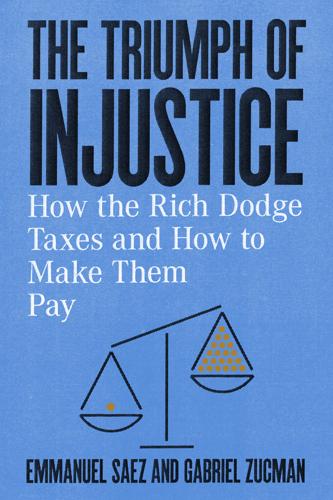
The Triumph of Injustice: How the Rich Dodge Taxes and How to Make Them Pay
by
Emmanuel Saez
and
Gabriel Zucman
Published 14 Oct 2019
These forms of depreciation logically should be subtracted from GDP but currently aren’t, although there are ongoing efforts to fix this flaw in economic statistics.2 The second adjustment to move from GDP to national income involves adding the income that the United States receives from abroad and subtracting what it pays to the rest of the world. In the 1950s and 1960s, when international capital markets were shut down, these international flows were negligible. Today, cross-border payments of interest and dividends are sizable. The United States pays 3.5% of its GDP to foreign countries—in the form of interest and dividends—and receives the equivalent of 5% of it from the rest of the world. On net it receives more than it pays. After removing depreciation and adding the net flows of foreign income, US national income reaches about $18.5 trillion in 2019, or $75,000 on average among the 245 million adults (aged twenty and above) who live in the United States.
…
THE GREAT ESCAPE: TAX EVASION ACROSS BORDERS At the heart of today’s tax dodging lies a powerful and versatile technology: the offshore shell company. Popularized in 2016 by the revelations in the Panama Papers, the offshore shell company is like a multi-tool. It can be used to avoid estate taxes, capital gains taxes, ordinary income taxes, wealth taxes, corporate income taxes, withholding taxes on cross-border payments of interest, dividends, and royalties. It also comes in handy if you want to defraud the IRS, ex-spouses, children, business partners, or creditors. It’s not unhelpful if your goal is to practice insider trading, launder money, pocket illegal commissions, fund an electoral campaign under the table, or finance terrorist groups.

Chokepoints: American Power in the Age of Economic Warfare
by
Edward Fishman
Published 25 Feb 2025
Correspondent bank: A domestic bank that serves as an intermediary for a foreign bank, enabling the foreign bank to access domestic financial services; U.S.-based correspondent banks are particularly important because they allow foreign banks to hold dollar deposits, conduct transactions in dollars, and facilitate cross-border payments on behalf of clients without the need for a physical presence in the United States. Entity List: Public list managed by the U.S. Commerce Department that identifies foreign companies and individuals subject to American export controls; U.S. firms require a license before selling goods or technology to anyone on the Entity List.
…
The idea of a SWIFT ban attracted attention because journalists and lawmakers gave it undue credit for isolating Iran back in 2012, and because the Kremlin had warned years earlier that it would retaliate harshly against any effort to do the same to Russian banks. To be sure, access to SWIFT was valuable. More than eleven thousand banks used the service to send more than 40 million messages each day, making it the lingua franca of cross-border payments. But it was not indispensable. Other similar systems existed, including Russia’s own SPFS, which it created following the annexation of Crimea and resulting sanctions in 2014. Iran, for its part, was shunned from the global financial system not because of the SWIFT ban but rather because all the country’s major banks were hit with American blocking sanctions.
…
Cryptocurrencies represent but one of many potential threats to the dollar’s continued global dominance. Russia and China, among others, have likewise sought to undermine the U.S. currency’s hegemonic position. Their initial efforts centered on the creation of alternative intermediaries, which allow cross-border payments without relying on the services of SWIFT and the U.S.-based clearinghouse CHIPS. But these initiatives have struggled to gain traction abroad. Even if successful, they alone would not decrease the power of American financial sanctions: so long as using the dollar is necessary for participation in the world economy, Washington’s ability to deny access to it will remain a fearsome economic weapon—no matter which messaging service or settlement mechanism is used.
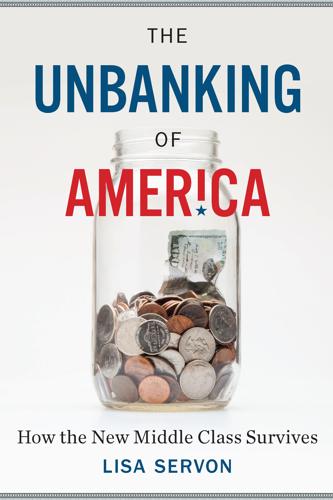
The Unbanking of America: How the New Middle Class Survives
by
Lisa Servon
Published 10 Jan 2017
One application of Ripple technology handles “cross-border payments”—value being moved from one country to another. My RiteCheck and Check Center customers frequently sent money to friends and relatives in their home countries, and in other parts of the United States, and they paid a lot for those transactions. The way we do this now, Larsen says, “is built on old 1970s infrastructure, where you have all the problems of uncertainty, failure rates, time delay, and enormous cost.” Larsen estimates that it costs about $1.6 trillion dollars to move the $22 trillion in cross-border payments that are transferred annually.

The Fourth Industrial Revolution
by
Klaus Schwab
Published 11 Jan 2016
The industry is also aware that blockchain will soon revolutionize the way it operates because its possible applications in finance have the opportunity to reduce settlement and transaction costs by up to $20 billion and transform the way the industry works. The shared database technology can streamline such varied activities as the storage of clients’ accounts, cross-border payments, and the clearing and settling of trades, as well as products and services that do not exist yet, such as smart futures contracts that self-execute without a trader (e.g. a credit derivative that pays out automatically when a country or company defaults). The healthcare industry is also faced with the challenge of incorporating simultaneous advances in physical, biological and digital technologies, as the development of new diagnostic approaches and therapies coincide with a push to digitize patient records and capitalize on the wealth of information able to be gathered from wearable devices and implantable technologies.

The Long Game: China's Grand Strategy to Displace American Order
by
Rush Doshi
Published 24 Jun 2021
In 2012, the United States and Europe used their influence over the organization to force it to delink Iranian banks from SWIFT networks, which marked the first time in SWIFT’s history that the institution had cut off an entire country from access to the company’s network.79 Iran had relied on SWIFT for two million cross-border payments annually—a volume that could not be replaced by another messaging network—and loss of access made payment for Iranian oil impossible, devastated Iran’s economy, and prevented the government from accessing substantial amounts of its own foreign reserves that it had invested abroad.80 A few years later, in 2017, SWIFT access was denied to North Korean banks.81 SWIFT’s structural power has even been threatened against great powers like Russia after its invasion of Crimea.
…
As one payments expert notes, “CIPS is trying to be the middleman between SWIFT and CNAPS,” which would give China’s central bank an ability to determine who has access to China’s financial system.95 This provides a central control point over transactions in renminbi and boosts China’s structural power. For now, CIPS is not a meaningful alternative to the SWIFT system. It may bolster China’s structural power by making it much easier for China to cut off other institutions or countries from China’s financial system, but it is not yet ready to serve as an alternative messaging system for cross-border payments outside of China. Even so, that day will come. Other great powers like Russia are already investing in such systems, and China—which also faces the threat of Western financial sanctions—has ample reason to continue developing CIPS into an alternative that can bypass American structural power over international payments in the coming decade.
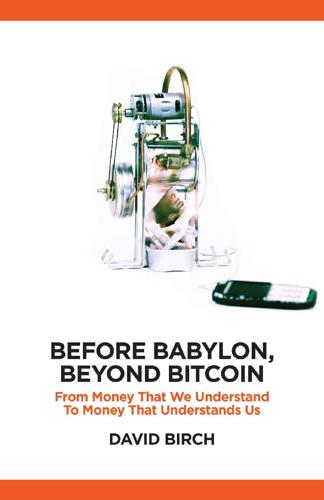
Before Babylon, Beyond Bitcoin: From Money That We Understand to Money That Understands Us (Perspectives)
by
David Birch
Published 14 Jun 2017
However, at Le Bourget, as The Times puts it, such controls are not ‘strictly’ applied (Bremner 2014). ‘Not strictly applied’ means, here, not applied at all, I imagine, so rich people can fly as much cash as they like in and out of France in their private planes. For those without private planes, the cross-border payments infrastructure is less facilitating. All of which makes me wonder what the point of these rules is. The stringent money-laundering regulations have limited impact on criminal activities. Yet tracking illicit money flows requires considerable bureaucracy and enforcing the regulations costs an estimated $7 billion in the United States, and probably far more (Kenny 2015).
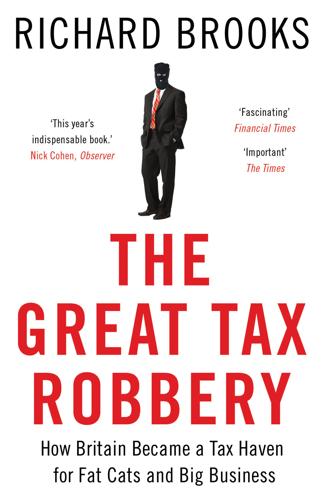
The Great Tax Robbery: How Britain Became a Tax Haven for Fat Cats and Big Business
by
Richard Brooks
Published 2 Jan 2014
But by 2011, just £680m worth of tax covering several years’ business was at stake on this ‘transfer pricing’ question and the related issue of multinationals stripping out profits from British operations in financing costs (see chapter 5).24 Since £680m tax equates to less than £3bn worth of cross-border payments – roughly the level of business that one big multinational might have with overseas affiliates in a single year – the evidence that the British tax authorities had surrendered the tax border was clear. The amount of tax recovered from these enquiries from the 770 companies dealt with by HMRC’s Large Business Service dropped to £273m by 2010/11 from a high of £1.6bn two years before.25 At the same time, designing financing schemes to funnel interest into tax havens and ‘tax-efficient supply chain management’ – i.e. transfer pricing schemes – for the biggest companies to siphon profits out of the UK into lower tax areas remain among the major accountancy firms most profitable lines of tax work.
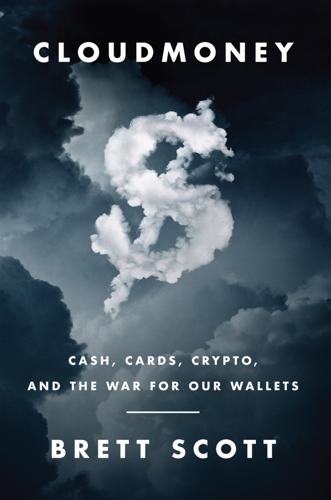
Cloudmoney: Cash, Cards, Crypto, and the War for Our Wallets
by
Brett Scott
Published 4 Jul 2022
These orders could be sent via a different messaging network, but SWIFT already has some 11,000 banks using its system globally, and to convince those banks to switch would be difficult (much harder than convincing all your friends to simultaneously switch to a different messaging platform). And, as Iran has learned, getting excluded from this network is a sure-fire way to strangle cross-border payments, meaning SWIFT has become enlisted as a tool of geopolitical influence. Communicating with the banking cartel The objective of any digital payment is to get banks hosting two accounts to edit those to give the illusion of money hopping out of one into the other. To initiate this we must ask them to do so.
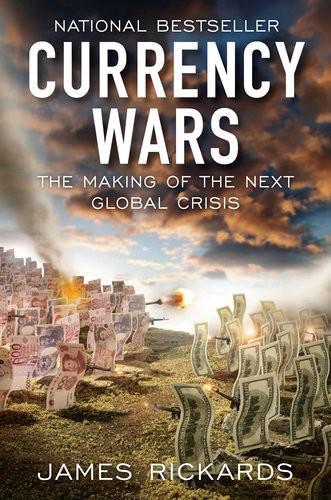
Currency Wars: The Making of the Next Gobal Crisis
by
James Rickards
Published 10 Nov 2011
From the end of World War II to the end of the Cold War, the world had been divided not only by the Iron Curtain separating the communist and capitalist spheres but also by restrictions imposed by capitalist countries themselves. These restrictions included capital controls that made it difficult to invest freely across borders and taxes that were imposed on cross-border payments made on investments. Stock markets limited membership to local firms and most banks were off-limits to foreign ownership. Courts and politicians tilted the playing field in favor of local favorites, and enforcement of intellectual property rights was spotty at best. The world was highly fragmented, discriminatory and costly for firms with international ambitions.

The Corruption of Capitalism: Why Rentiers Thrive and Work Does Not Pay
by
Guy Standing
Published 13 Jul 2016
Copyright rules for music, paintings, sculpture, photographs, videos, films, TV programmes, computer programs and databases have also been strengthened. For sound recordings, the term of protection has risen to seventy years from date of release in the EU and to ninety-five years in the USA, which grants the same term to films made by US movie studios. In 2014, cross-border payments of royalties and licensing fees for use of all forms of intellectual property (excluding profits from domestic exploitation) were estimated by the WTO at nearly $300 billion, over three times the figure in 2000 and ten times the amount in 1990. These figures do not include trade in audio-visual services – films, music, videos, TV programmes – worth $19 billion in 2013.

The Big Nine: How the Tech Titans and Their Thinking Machines Could Warp Humanity
by
Amy Webb
Published 5 Mar 2019
The BAT repeatedly skirts bureaucratic rules. All those earlier scandals—when China’s State Administration of Foreign Exchange fined Alipay 600,000 yuan (about $88,000) for misrepresenting international payments from 2014 to 2016, and Tenpay was punished for failing to file proper registration paperwork for cross-border payments between 2015 and 2017—turned out not to be anomalies.4 It becomes apparent that these aren’t isolated incidents as Chinese state officials experience the tension between socialist sensibilities and the realities of capitalism. Already we are seeing the downstream implications of all these political, strategic, and technical vulnerabilities.

The Truth Machine: The Blockchain and the Future of Everything
by
Paul Vigna
and
Michael J. Casey
Published 27 Feb 2018
With smart hedging strategies that take advantage of blockchain technology’s transparency and low transaction costs, they’ve figured out how to minimize their own risk in briefly holding bitcoin, which lets them pass on affordable rates to their customers, who only deal in their local currencies. The approach is paying dividends, as evident in the recent success of BitPesa, which was established in 2013 and was profiled in The Age of Cryptocurrency. The company, which offers cross-border payments and foreign-exchange transactions in and out of Kenya, Nigeria, Tanzania, and Uganda, reported 25 percent month-on-month growth, taking its transaction volume to $10 million midway through 2017, up from $1 million in 2016. Separately, there were reports that 20 percent of the remittances that Filipino immigrants in South Korea send back home were handled in bitcoin.

Easy Money: Cryptocurrency, Casino Capitalism, and the Golden Age of Fraud
by
Ben McKenzie
and
Jacob Silverman
Published 17 Jul 2023
In June 2021, he announced that El Salvador would begin accepting Bitcoin as legal tender in September. It wasn’t long to prepare. While the actual plan was closely held, the marketing pitch was simple and potentially compelling: If Bitcoin could be used as money—at least when it came to making cross border payments and encouraging tourism—it could be a game changer for the country. El Salvador’s economy depends on remittances. The money that the two to three million people of Salvadoran descent living in the United States send home to their families and loved ones accounts for one-quarter of El Salvador’s GDP.

Stigum's Money Market, 4E
by
Marcia Stigum
and
Anthony Crescenzi
Published 9 Feb 2007
Foreign banks, that—after they get their CHIPS position—do a lot of volume to work off that position, can cause variability late in the day in a clearing bank’s position. Sometimes on a settlement Wednesday, this will create real problems for such a bank. The CHIPS numbers are particularly important to banks dealing abroad because 95% of all U.S. dollar cross-border payments are settled through CHIPS. Settlement Wednesday is an important day on a fed funds desk, but is no longer filled with the types of uncertainties that once sparked much greater volatility in past years. The Federal Reserve took a number of actions during the 1990s to limit such volatility.
…
There is also the convenience factor. A foreign bank branch in Los Angeles that’s doing a trade with a regional American in Philadelphia or a Japanese bank in Seattle might rather pay and receive funds via its local district Federal Reserve Bank than via a New York bank. In early 2006, roughly 95% of all U.S. dollar cross-border payments were settled through CHIPS, which was clearing $1.4 trillion in payments on a daily basis (see below and Chapter 12 for a further discussion on CHIPS). In the early 1980s, clearinghouse funds differed from fed funds in that they turned into immediately available funds, that is, fed funds, only on the day after the delivery or value date.
…
Malz (1998) identified a number of reasons why FRA and swap rates contain information on the so-called term structure of interest rates superior to that for government bonds. • Eurodollar transactions that take place in London settle mostly through CHIPS; transactions that take place in New York settle mostly through Fedwire. In early 2006, roughly 95% of all U.S. dollar cross-border payments were settled through CHIPS. • Some tiering of Eurodollar rates exists. This was apparent particularly in 1998 when investors assigned greater risk to holding Eurodollars in Japanese banks. • Some trading in Eurocurrency deposits is generated by swaps, which are extensively used by banks to match assets and liabilities in their Eurobooks
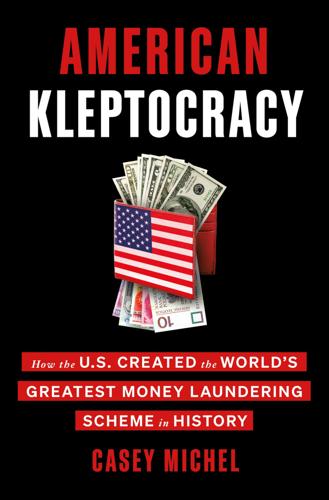
American Kleptocracy: How the U.S. Created the World's Greatest Money Laundering Scheme in History
by
Casey Michel
Published 23 Nov 2021
Given that many of these requirements for transparency are already on the books, applying such transparency is far from the uphill battle it may seem. Nor is that preexisting language in things like the Patriot Act the only card the U.S. government can quickly play. In 2004, in a little-noticed measure at the height of the Iraq War, Congress granted the Treasury Department the right to create a cross-border payments database. For all the reasons detailed above—internal lethargy, lack of resources, industry-wide pushback—the database never came into existence. But that doesn’t mean it can’t yet be realized. As Joshua Kirschenbaum and David Murray wrote for the German Marshall Fund, “U.S. banks process trillions of dollars in payments per day, including about half of cross-border funds transfers worldwide.”25 A database highlighting and detailing these payments, which we already have in places like Canada and Australia, would not only help reduce regulatory burdens on banks but would also stymie kleptocrats trying to bounce their funds in and out of American jurisdictions.
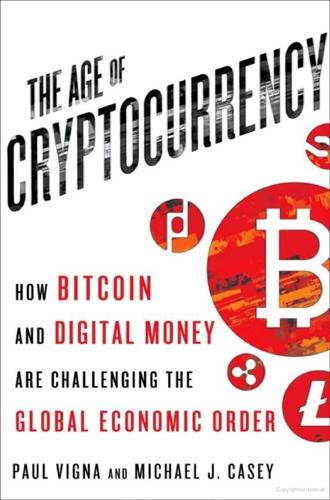
The Age of Cryptocurrency: How Bitcoin and Digital Money Are Challenging the Global Economic Order
by
Paul Vigna
and
Michael J. Casey
Published 27 Jan 2015
Not for nothing, Ripple is aggressively marketing to these smaller banks. David Andolfatto, the chief economist at the Federal Reserve Bank of St. Louis, has sung Ripple’s praises for cutting waste in the financial system. By mid-2014, the concept was just starting to resonate with a few early adopters. U.K.-based AstroPay, which claimed to manage the largest cross-border payments network in Latin America, signed on as a gateway for its six hundred thousand business clients in the region, and Fidor Bank of Germany, already a pioneer in providing services to bitcoin businesses, said it planned to use Ripple to offer supercheap international transfers, as did CBW Bank and Cross River Bank in the United States.

The Future Is Asian
by
Parag Khanna
Published 5 Feb 2019
Given the rapid advance of these blockchain instruments, it is more likely that all Asian countries will use them to denominate trade with each other than that they will all change to using the renminbi. Whatever the currency, central banks such as those of Singapore, Australia, and New Zealand have established financial technology (“fintech”) bridges to enable seamless cross-border payments with others quickly getting on board. In Asia, money knows very few borders. Capitalism, Asian Style Asian countries have no doubt that globalization has been their ticket to prosperity. Even as they become less dependent on Western economies, they are pursuing an “open regionalism” of integrating with one another while expanding trade ties far and wide.

More: The 10,000-Year Rise of the World Economy
by
Philip Coggan
Published 6 Feb 2020
Merchants would have agents in cities with which they traded; this would allow credit to be granted, via the use of bills of exchange, a written order instructing the recipient to make a payment. A hawala, or order to pay, was very similar to a modern cheque. In the upper left corner was the amount to be paid; in the lower left corner of the order was the date and the name of the payer.18 The hawala system is still widely used in the Islamic world as a system of cross-border payment. Trust was vital to this system as traders believed that their fellow Muslims would not break their word.19 Buying and selling on credit was widespread. While interest was avoided, bankers charged fees for lending money, for changing money, and for issuing bills of exchange.20 The goods traded were the typical high-value items of the day.
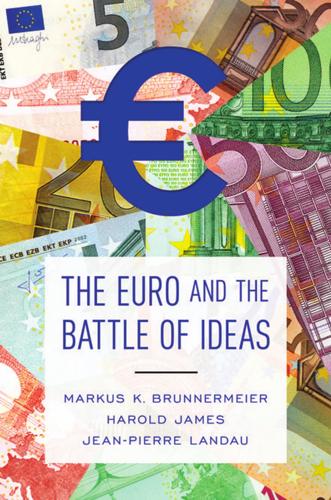
The Euro and the Battle of Ideas
by
Markus K. Brunnermeier
,
Harold James
and
Jean-Pierre Landau
Published 3 Aug 2016
It is composed, however, of many elements, and its architecture can be best described as a network where different entities—the ECB and the NCBs—constantly interact according to predetermined processes and rules. The financial relationship between the ECB and national central banks is the backbone and the lifeblood of the euro. Cross-border payments between countries are ultimately settled between central banks under the TARGET2 multilateral payments system (in 2007 TARGET2 replaced the similar TARGET system). Prior to the crisis, large sums of cross-border capital flows were channeled through the interbank market. Many banks in the periphery of Europe, such as Spain, refinanced the loans they granted short term in the interbank market, for example from a German bank.

Manias, Panics and Crashes: A History of Financial Crises, Sixth Edition
by
Kindleberger, Charles P.
and
Robert Z., Aliber
Published 9 Aug 2011
Previously the United States bought silver from Mexico which was then shipped to China to finance the US trade deficit; then the silver was shipped to Britain to finance China’s trade deficit. The institutional innovation was that American merchants sent bills of exchange that specified payment in the British pound for China’s imports; the Chinese then shipped these bills to Britain to finance their trade deficit. The transactions costs involved in making cross-border payments using bills of exchange were much smaller than those that involved the shipment of silver. The result of this innovation was that the silver stayed in the United States so that the US money supply did not decline.2 The global boom of the 1850s followed from the combination of new gold discoveries, the formation of new banks in Britain, France, Germany, and the United States, the establishment of clearing-houses by the banks in New York and in Philadelphia and the expansion of the London clearing-house.
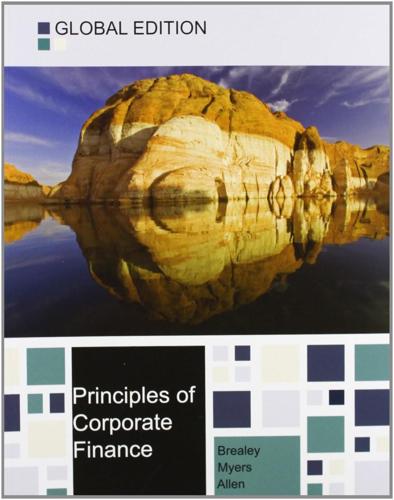
Principles of Corporate Finance
by
Richard A. Brealey
,
Stewart C. Myers
and
Franklin Allen
Published 15 Feb 2014
Fedwire is operated by the Federal Reserve system, and connects nearly 9,000 financial institutions to the Fed and thereby to each other.15 CHIPS is a bank-owned system serving more than 1,400 U.S. financial institutions and hundreds of international participants. It mainly handles eurodollar payments and foreign exchange transactions, and is used for over 95% of cross-border payments in dollars. Table 30.5 shows that the number of payments by Fedwire and CHIPS is relatively small, but the sums involved are huge. Speeding Up Check Collections Although checks are rarely used for large-value payments, they continue to be the most common method of payment for smaller nonrecurring transactions.